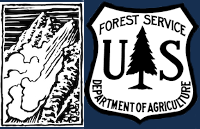GNFAC Avalanche Forecast for Sat Mar 15, 2025
<p><span><span><span><span><span><span>Avalanches involving the recent snow are possible for a person to trigger. The main concern is </span></span></span></span></span></span><span><span><span><strong><span><span>wind slab avalanches </span></span></strong></span></span></span><span><span><span><span><span><span>breaking 6 inches to 2 feet deep where the new snow is drifted into thicker or stiffer slabs. Yesterday the wind was calm, so if the wind increases today there is still plenty of soft snow to be drifted into fresh, reactive wind slabs.</span></span></span></span></span></span></p>
<p><span><span><span><span><span><span>Yesterday, near Cooke City there were a handful of small avalanches (</span></span></span></span></span></span><a href="https://www.mtavalanche.com/node/34584"><span><span><span><strong><span…;), and in the Centennials near Island Park Mark saw a larger avalanche that broke on or under a crust below the new snow (</span></span></span></span></span></span><a href="https://www.youtube.com/watch?v=3ziK29iO3zQ&list=PLXu5151nmAvToI_ir…;). These occurred where there was just the slightest bit of wind to stiffen the snow surface. Avoid wind-loaded slopes near ridgelines to minimize the chances of triggering an avalanche. Watch for snow blowing off ridges, and look for cracking around your skis as signs of fresh wind slabs.</span></span></span></span></span></span></p>
<p><span><span><span><strong><span><span>Loose snow avalanches, </span></span></strong></span></span></span><span><span><span><span><span><span>dry or wet, are also possible and can easily run long distances on the crust below the new snow (</span></span></span></span></span></span><a href="https://www.youtube.com/watch?v=6pLrdFVFpdE&list=PLXu5151nmAvToI_ir…;. These will be small and somewhat predictable, but could be dangerous if they drag you into rocks, trees or over a cliff. If the sun shines it may quickly soften the snow surface and increase the chance of wet loose slides on sunny slopes.</span></span></span></span></span></span></p>
<p><span><span><span><span><span><span>In the southern Madison and southern Gallatin ranges and near West Yellowstone, the weak snow that was buried in late January can produce deeper </span></span></span></span></span></span><span><span><span><strong><span><span>persistent slab avalanches</span></span></strong></span></span></span><span><span><span><span><span><span>. <strong>Yesterday in the Taylor Fork a snowmobiler triggered a 4 foot deep slide in an isolated short, steep pocket of snow</strong> (</span></span></span></span></span></span><a href="https://www.mtavalanche.com/node/34599"><span><span><span><strong><span… and observation</span></span></u></span></strong></span></span></span></a><span><span><span><span><span><span>). This underscores the importance of only exposing one person at a time to steep slopes, and carrying proper avalanche rescue gear (transceiver, shovel and probe). These types of slides have become increasingly less frequent, but we could see more with the added weight of new snow over the next few days.</span></span></span></span></span></span></p>
<p><span><span><span><span><span><span>Today the avalanche danger is MODERATE across the forecast area.</span></span></span></span></span></span></p>
Snowmobiler triggered 3 foot deep slide Sunlight Basin
A group of riders saw Mark at the gas station and shared that they had triggered a 4' deep slide in a small pocket in Sunlight Basin of the Taylor Fork area. It was in an area with a relatively shallower snowpack, and broke on weak snow near the bottom of the snowpack. The rider that triggered it was going uphill and got stuck shortly after and noted the snowpack was much deeper there.
On Mar 14 A group of riders shared that they had triggered a 4' deep slide in a small pocket in Sunlight Basin of the Taylor Fork area. It was in an area with a relatively shallower snowpack, and broke on weak snow near the bottom of the snowpack. The rider that triggered it was going uphill and got stuck shortly after and noted the snowpack was much deeper there.
Forecast link: GNFAC Avalanche Forecast for Sat Mar 15, 2025
Snowmobiler triggered 4 foot deep slide Sunlight Basin
A group of riders saw Mark at the gas station and shared that they had triggered a 4' deep slide in a small pocket in Sunlight Basin of the Taylor Fork area. It was in an area with a relatively shallower snowpack, and broke on weak snow near the bottom of the snowpack. The rider that triggered it was going uphill and got stuck shortly after and noted the snowpack was much deeper there.
small dry loose slides north of Cooke
There was a small natural dry loose on south face of Crown Butte and I triggered a dry loose slide on a test slope near the ridge on Miller ridge (video).
Near Cooke City on Mar 14 there was 6" of new snow and wind was calm, even along the ridge near regularly wind-loaded slopes, and there was no snow blowing off ridgelines. The photo shows a slope that normally receives a lot of wind effect, but the new snow is unaffected indicating the wind has been calm. Photo: GNFAC
Dug a pit on a northeast facing slope, 9300' (profile and pic attached) near Cooke City. Snow depth was 7-8 feet. 6" of new snow was right side up. Below the new snow was a soft (1F-) melt-freeze crust with soft decomposing and slightly faceted particles below. ECTN13 broke below the crust. Below that the snowpack was 1F to P+ hard and lacked weak layers. The Feb 4 dirt layer was clearly visible. Photo: GNFAC
Forecast link: GNFAC Avalanche Forecast for Sat Mar 15, 2025
